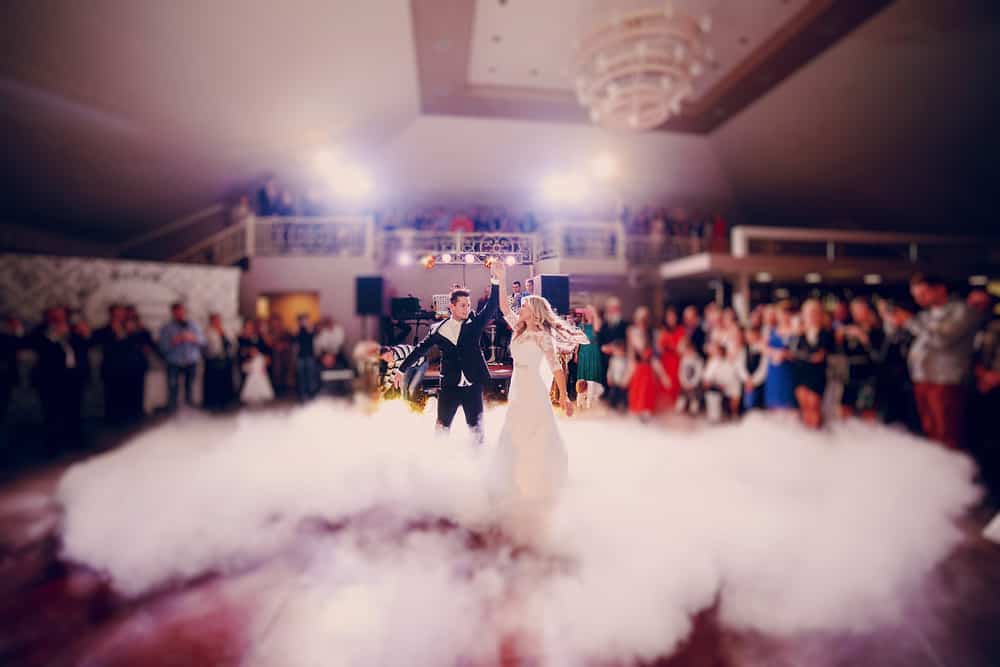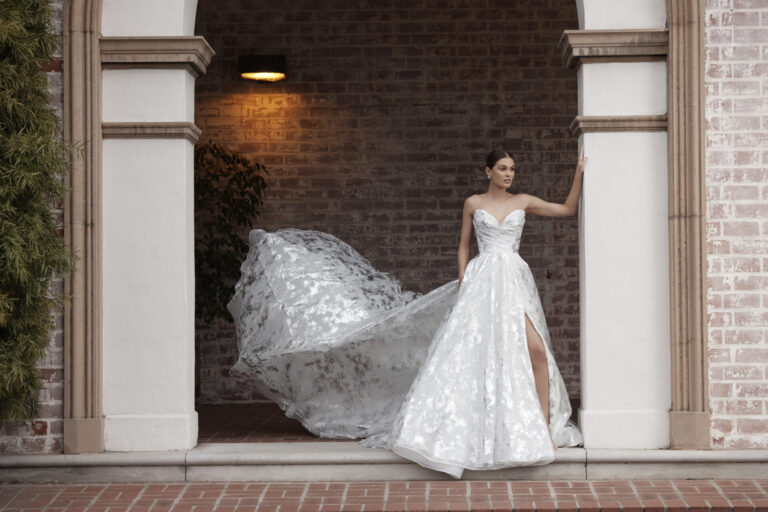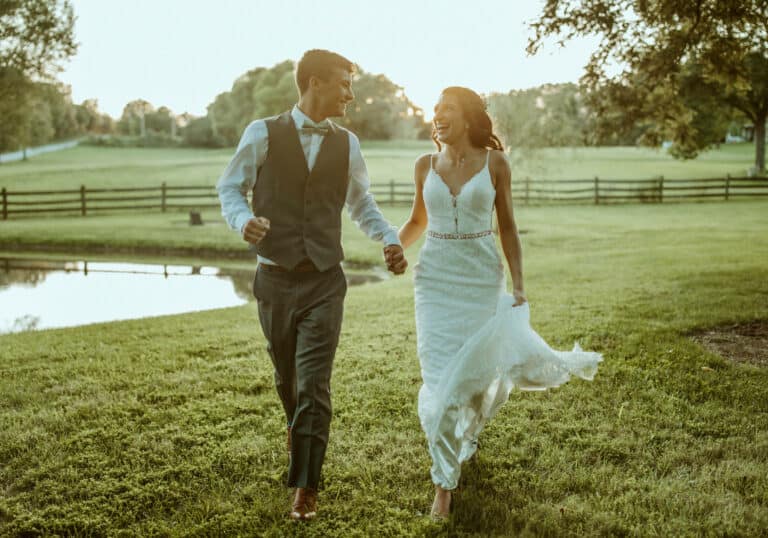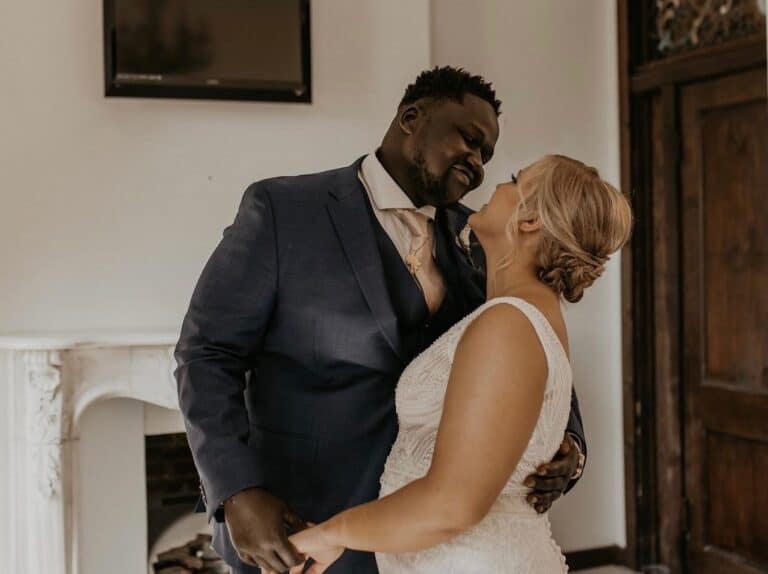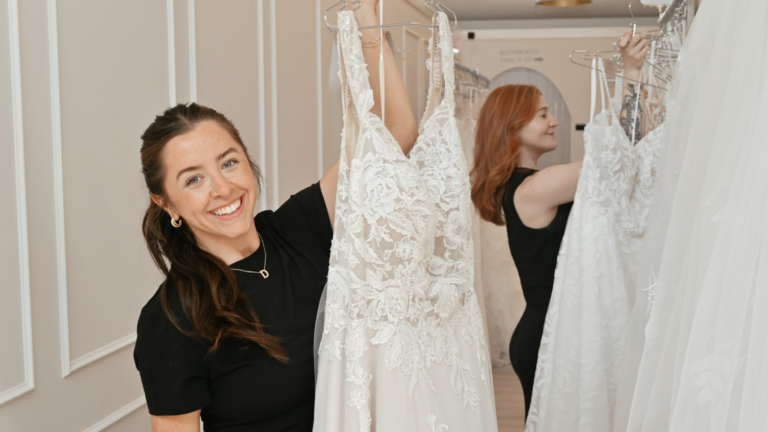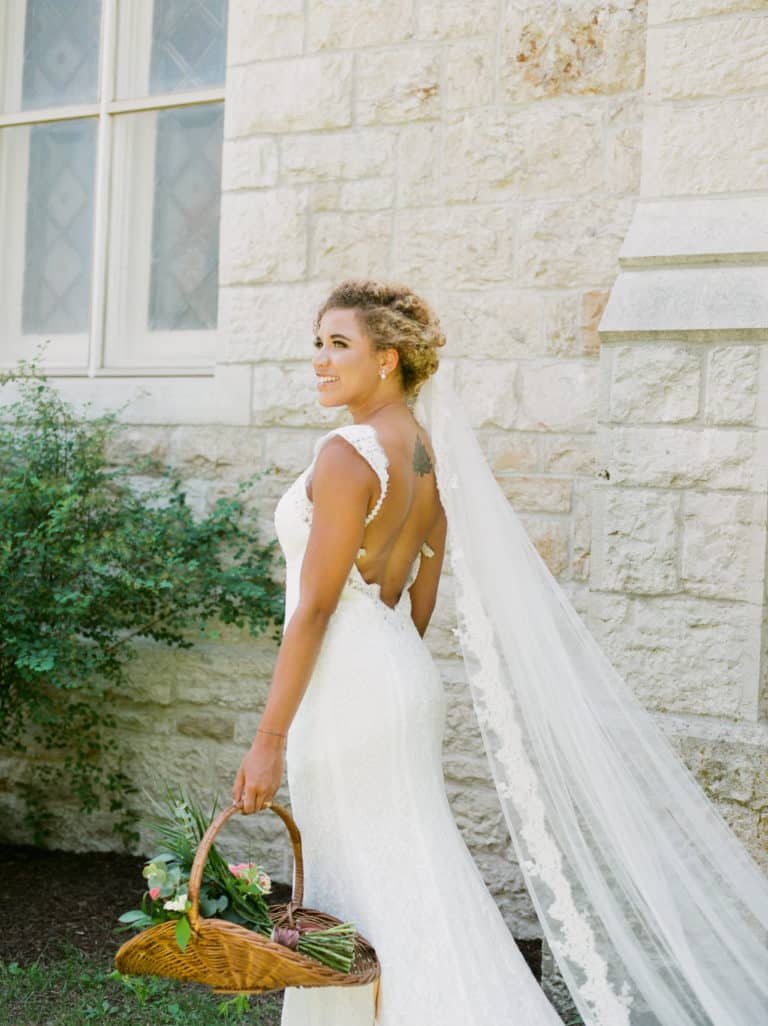7 Tips For Dancing In Your Wedding Dress
After choosing your dream wedding dress, some can’t imagine taking it off at the end of the night, let alone immediately after the ceremony. With the effort, time, and money it takes to find your perfect dress, it’s time to master how to maneuver in it.
Some of the most memorable events happen after the ceremony and during the reception. You don’t want to spend it uncomfortable or worried about the well-being of your dress. To prevent a night spent worrying, here are a few tips to prepare you for how to dance in your wedding dress.
1. Bustle Your Gown
If there is one trend that is almost always in style when it comes to wedding dresses, it’s a train. Dancing in your wedding dress with a train that is not bustled can be hazardous to you or others and harmful to the dress itself. A bustle is the easiest and most common way for your dress to be altered in order to move around comfortably and break out some dance moves throughout the night.
There are several types of bustles, and your seamstress will guide you in deciding which one works best for your dress and silhouette. However, the general concept of all bustles is the same: to button up the dress to floor length or higher so you can dance and move as you please.
When it comes time to bustle post-ceremony, it’s best to have a member of the bridal party help you connect the dots to make sure you stay bustled all night. Sometimes, it can be hard to pin and button a section of your dress that’s located in the posterior, so guidance helps speed up the process.
2. Avoid or Remove Boning
A wedding gown is a unique ensemble that requires particular support in just the right places. This is especially true if you have chosen a strapless style gown or a tight, figure-hugging silhouette that bears more than a little skin.
If you’re a bride who cares more about comfort and mobility on their big day, you might consider a gown with no boning. Restrictive boning can get in the way of your dancing, so choose a dress that provides an alternative type of support or fits more loosely.
However, don’t worry if you’ve found the perfect dress and it has restricting boning. It can be removed or replaced with a more flexible structure by your seamstress.
3. Opt for a Looser Style
Certain dress styles like the mermaid or trumpet shape can restrict you from getting down on the dancefloor. Fortunately, there are many other styles of wedding dresses that offer mobility and elegance, from flowy A-line dresses to breathtaking ballgowns.
It’s important to also consider the fabric when deciding on what dresses you can move freely in. Fabrics like chiffon or crepe are effortlessly sleek yet lightweight and comfortable on the skin.
But, if you’re set on a tight-fitting dress that shows off your curves and still want to move somewhat freely, opt for a style with a slit in the leg for added room to move around.
4. Practice Dancing in Your Dress
This is an essential step, no matter the style of dress you’re wearing. You’ll want to practice any choreography you plan on showcasing on the big day to ensure that your dress is capable. Besides, if you accidentally rip a seam or pop a button, then you have time to repair the dress before it happens on your wedding day.
Another benefit of practicing your dance moves in your dress beforehand is to discover any discrepancies in the hemming. Shuffle side-to-side and do some spins to ensure you’re not tripping over your dress, and to save yourself a fall on the big day.
5. Alter Your Dress
There are many simple alterations you can make to your dress to make it easier to move on the dancefloor. If your dress entails a long train, it can easily be shortened to accommodate dancing and prevent tripping.
Your dress stylist can guide you in choosing the perfect wedding gown that matches your inspiration and style, and your seamstress will help alter the dress to fit you like a glove while still allowing comfort and mobility.
6. Make the Train Detachable
For a bride that doesn’t want to worry about bustling a train, consider a detachable one. This trendy style combines two completely different looks into one and helps take off some of the weight of the dress when it comes time to mingle around at the reception.
With many different styles, including trains that attach at the shoulders or waist, you can make this look as versatile and personalized as you want.
7. Change Into a Different Dress for the Reception
If your budget allows, consider opting for a second dress for the reception. This option allows you to showcase more than just one side of the bride. For the ceremony, some brides might consider a more elegant, traditional, or restricting ensemble.
Whereas, for the reception, it’s easier to navigate through the venue, shuffle through people, and dance freely with a more lightweight and liberating dress. There are many fun styles to choose from that will still offer a breathtaking bridal look while allowing for easier movement throughout the reception.
If you’re in the market for your dream wedding dress but need help deciding which style will also compliment your dance moves, turn to the stylist at Savvy Bridal. We can suggest dresses depending on your preferences from a selection that offers elegance and convenience.
Contact us today to book your dress-shopping experience. Located in Kansas City and St. Louis, our stylists are eager to help.

